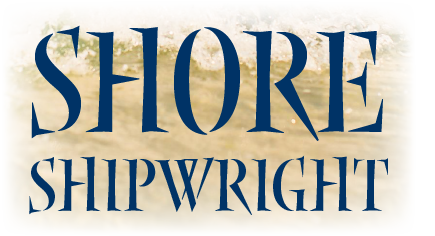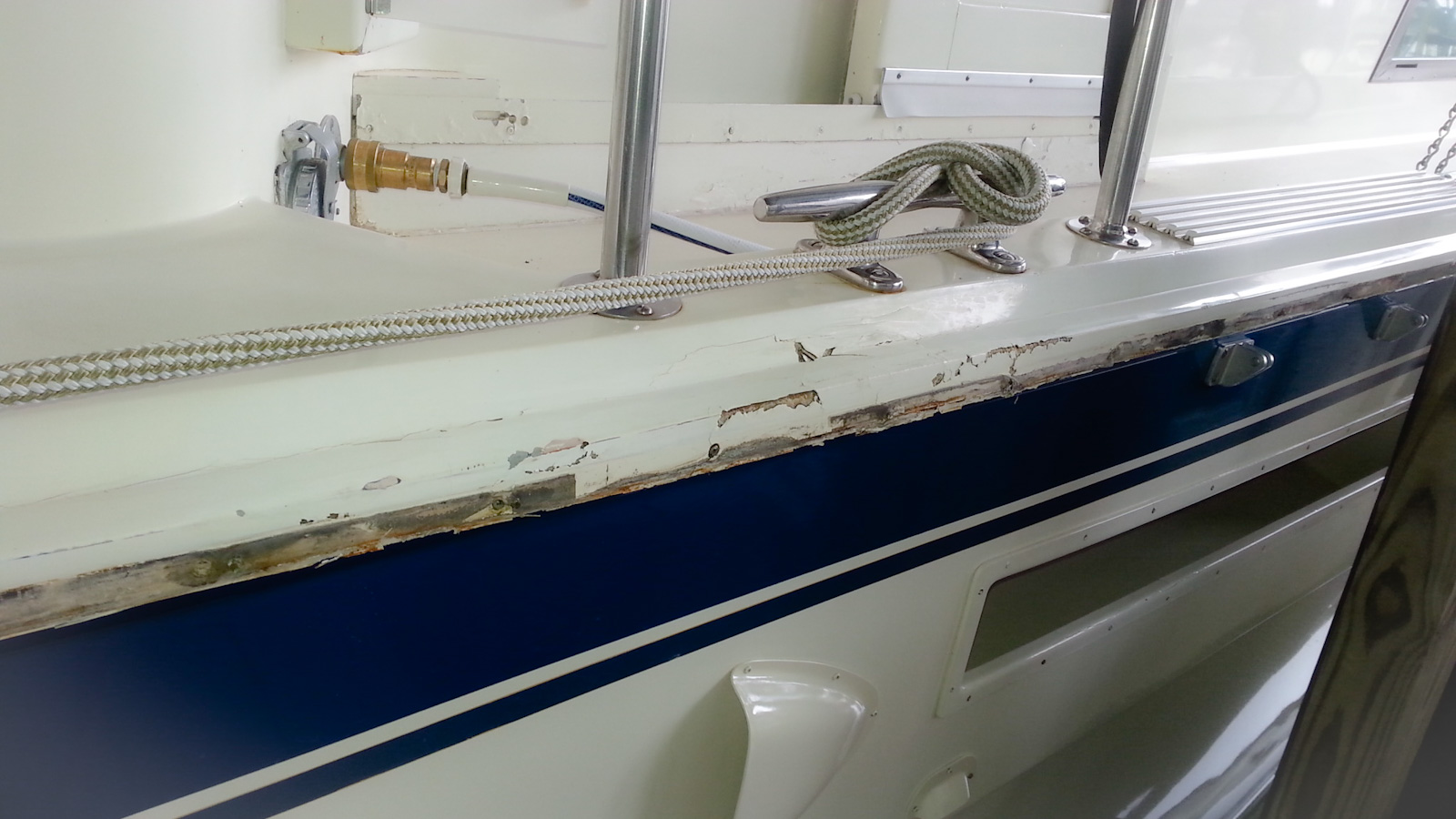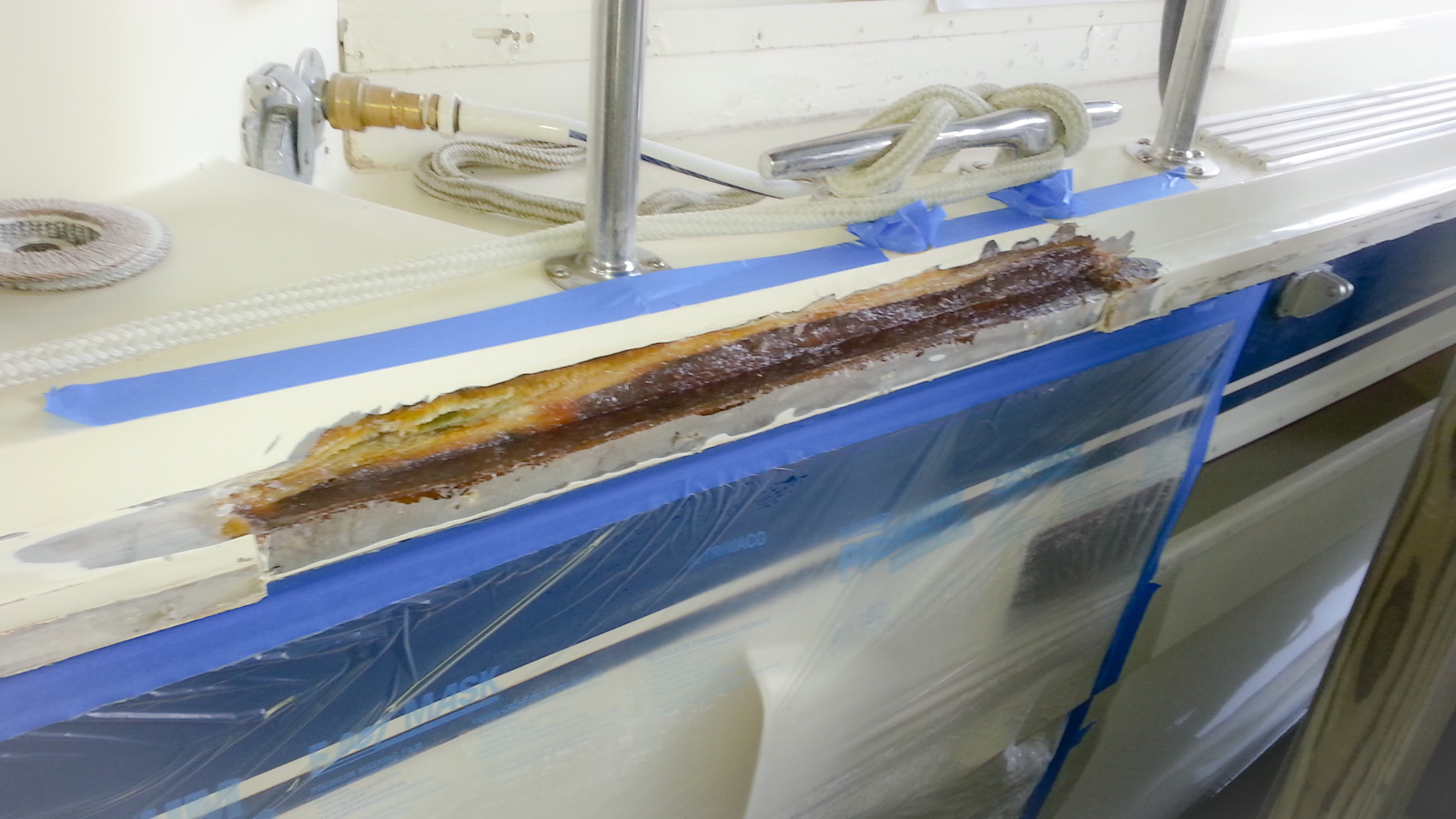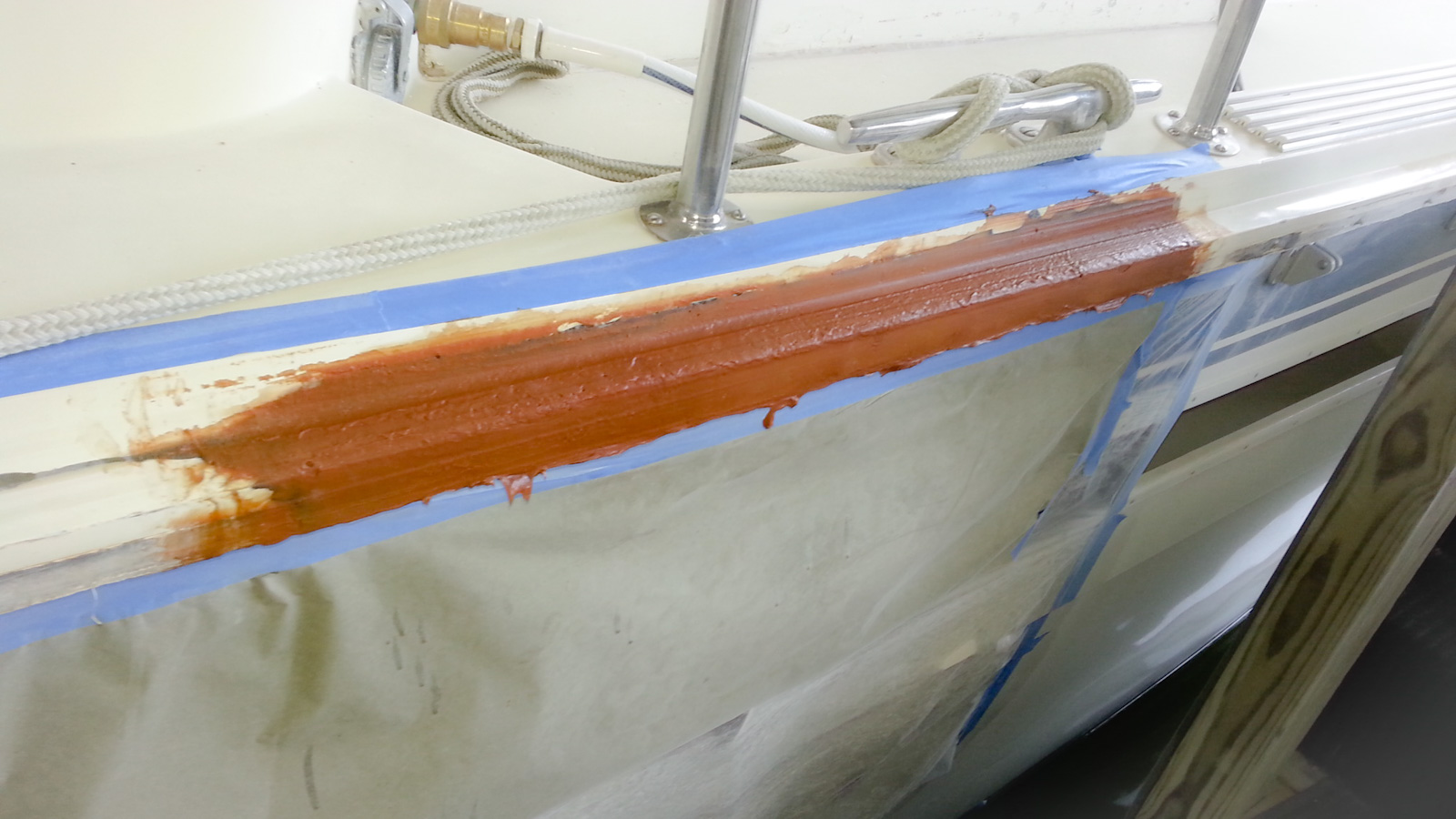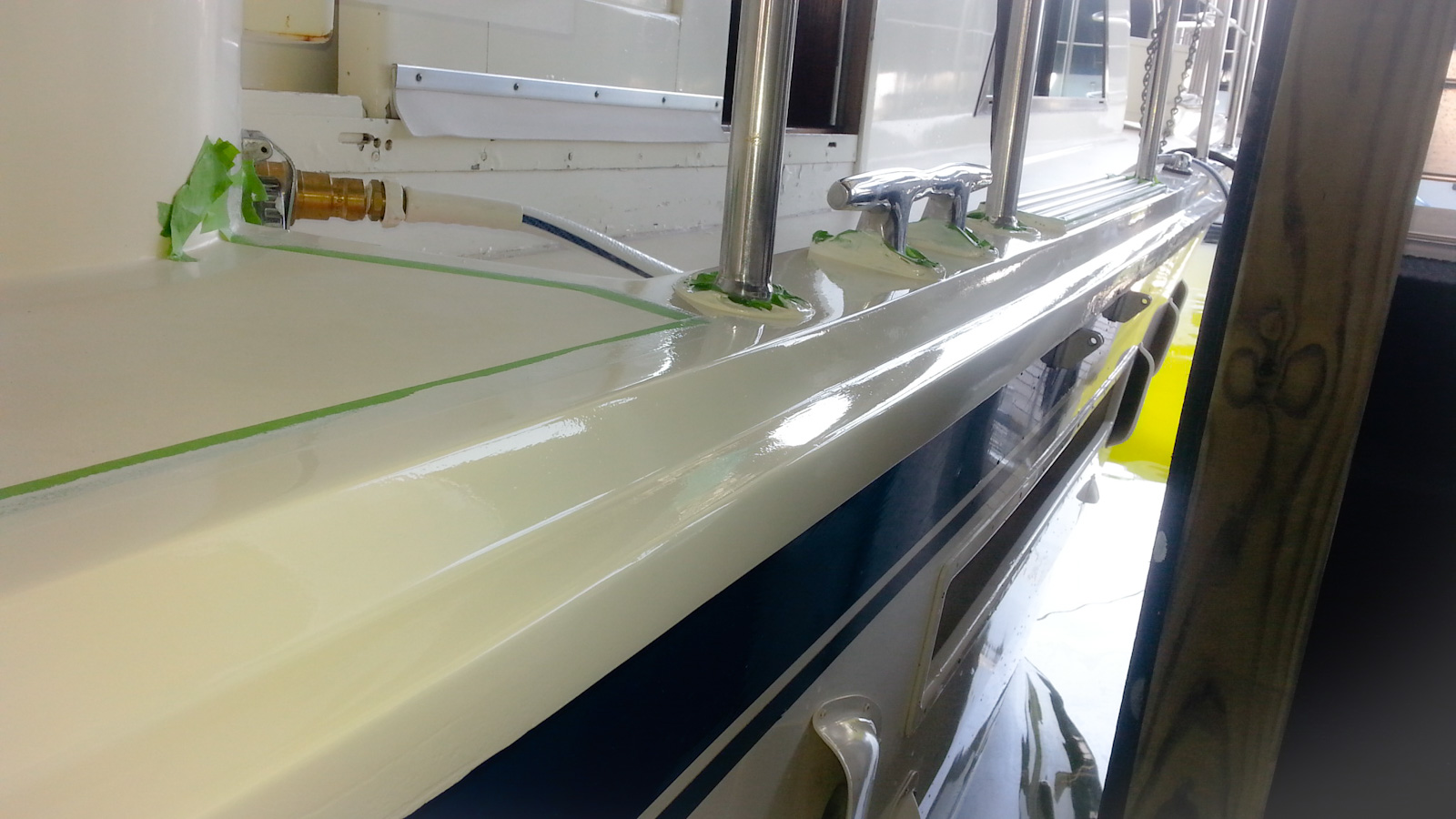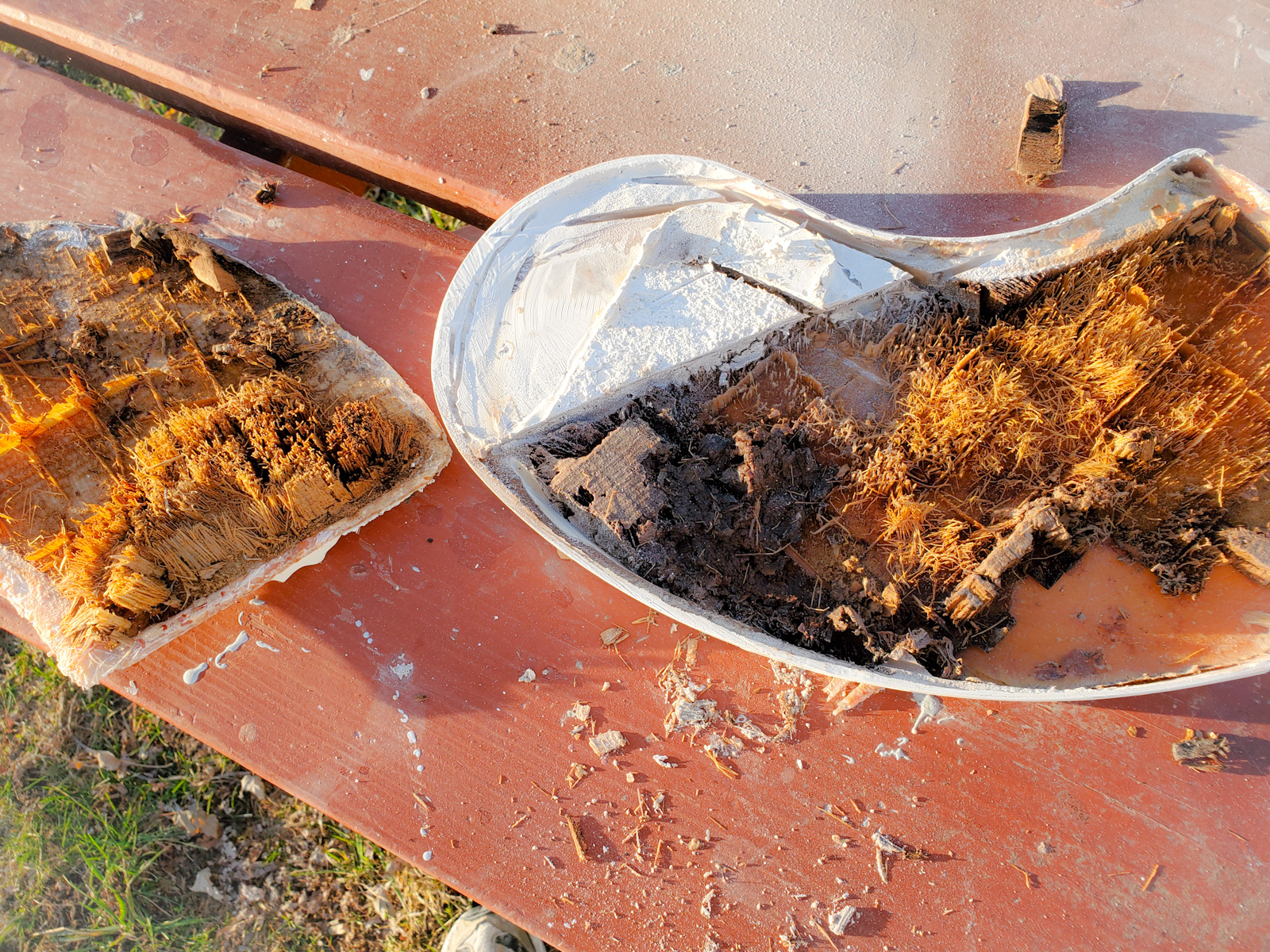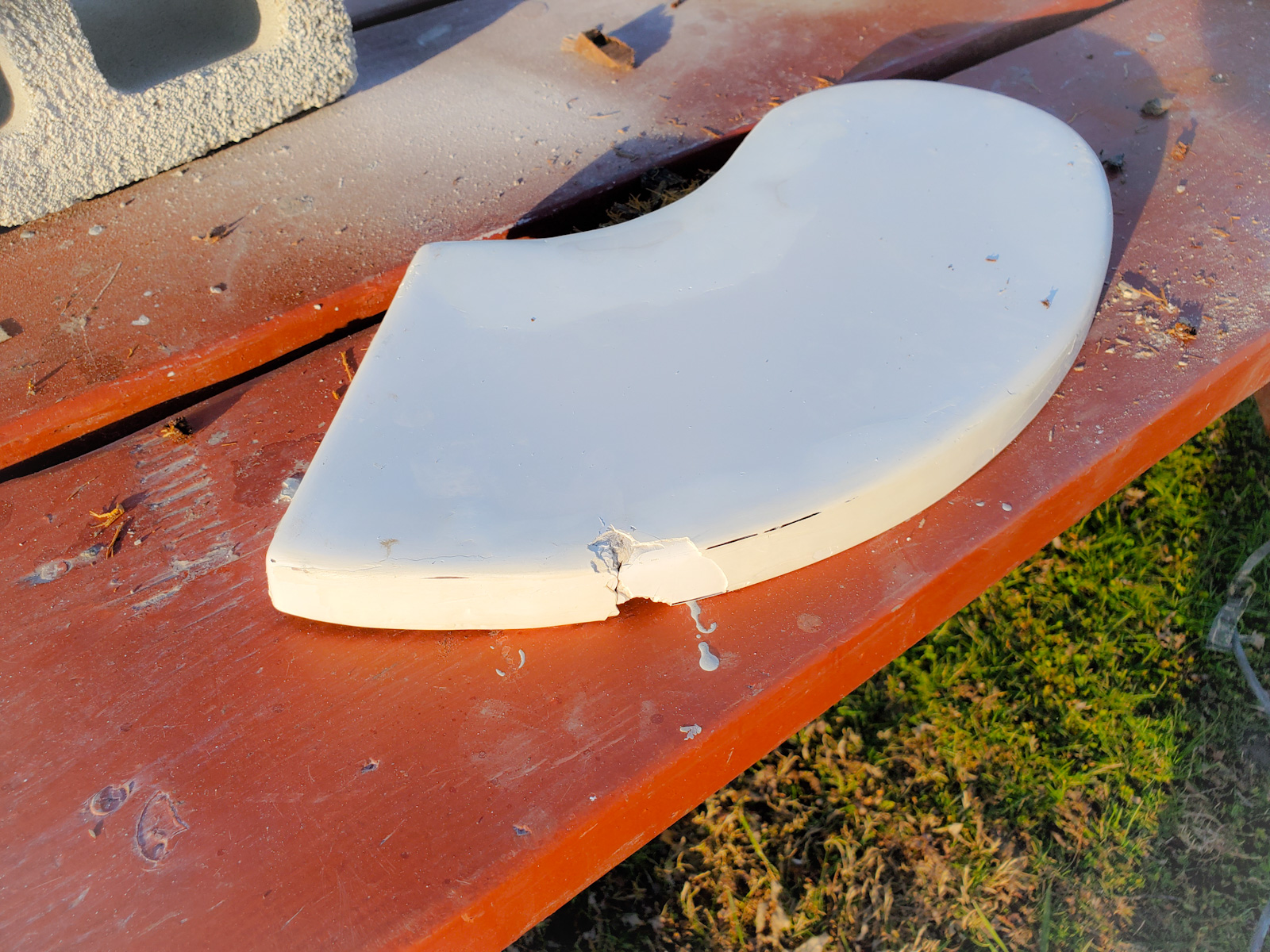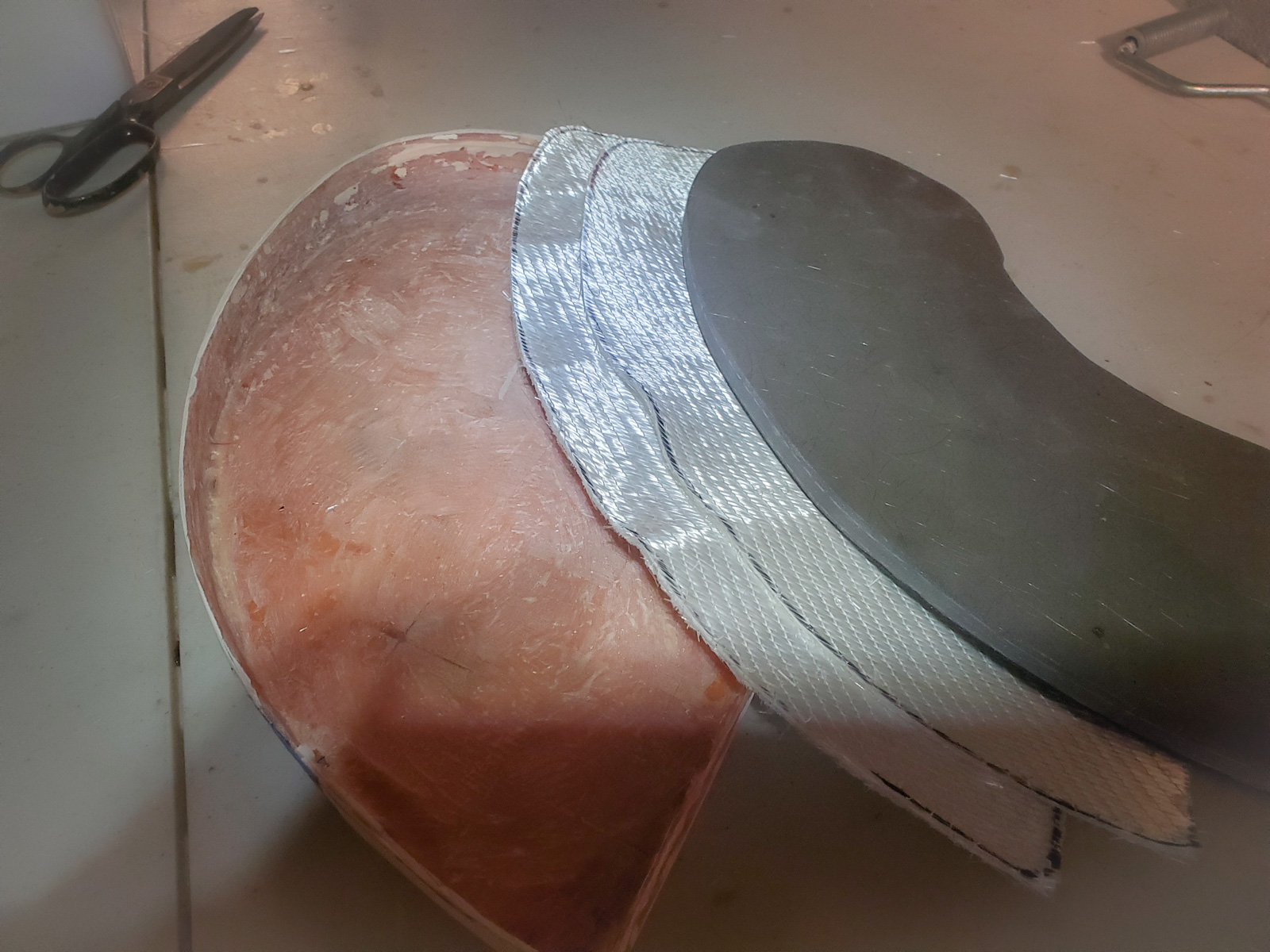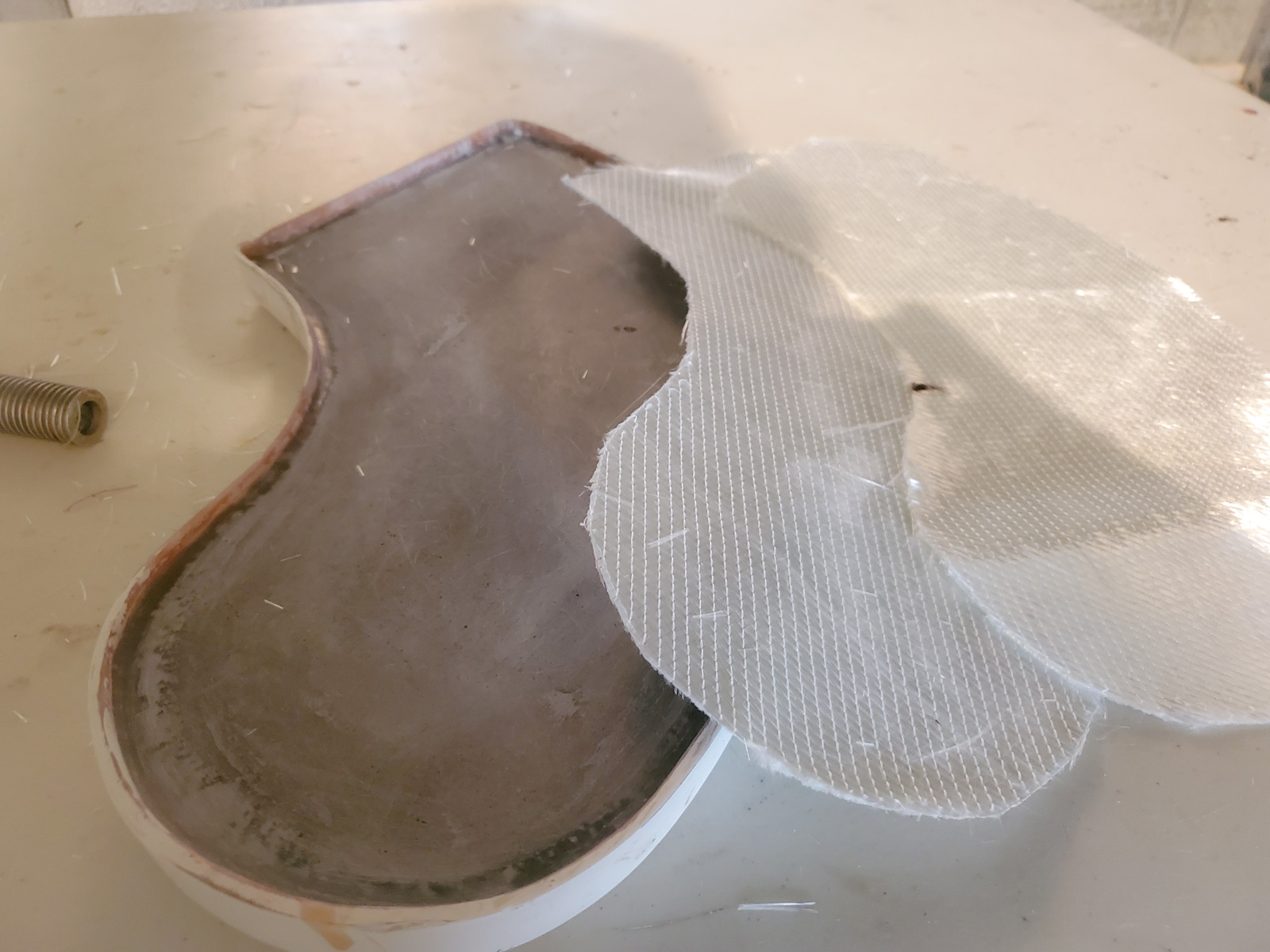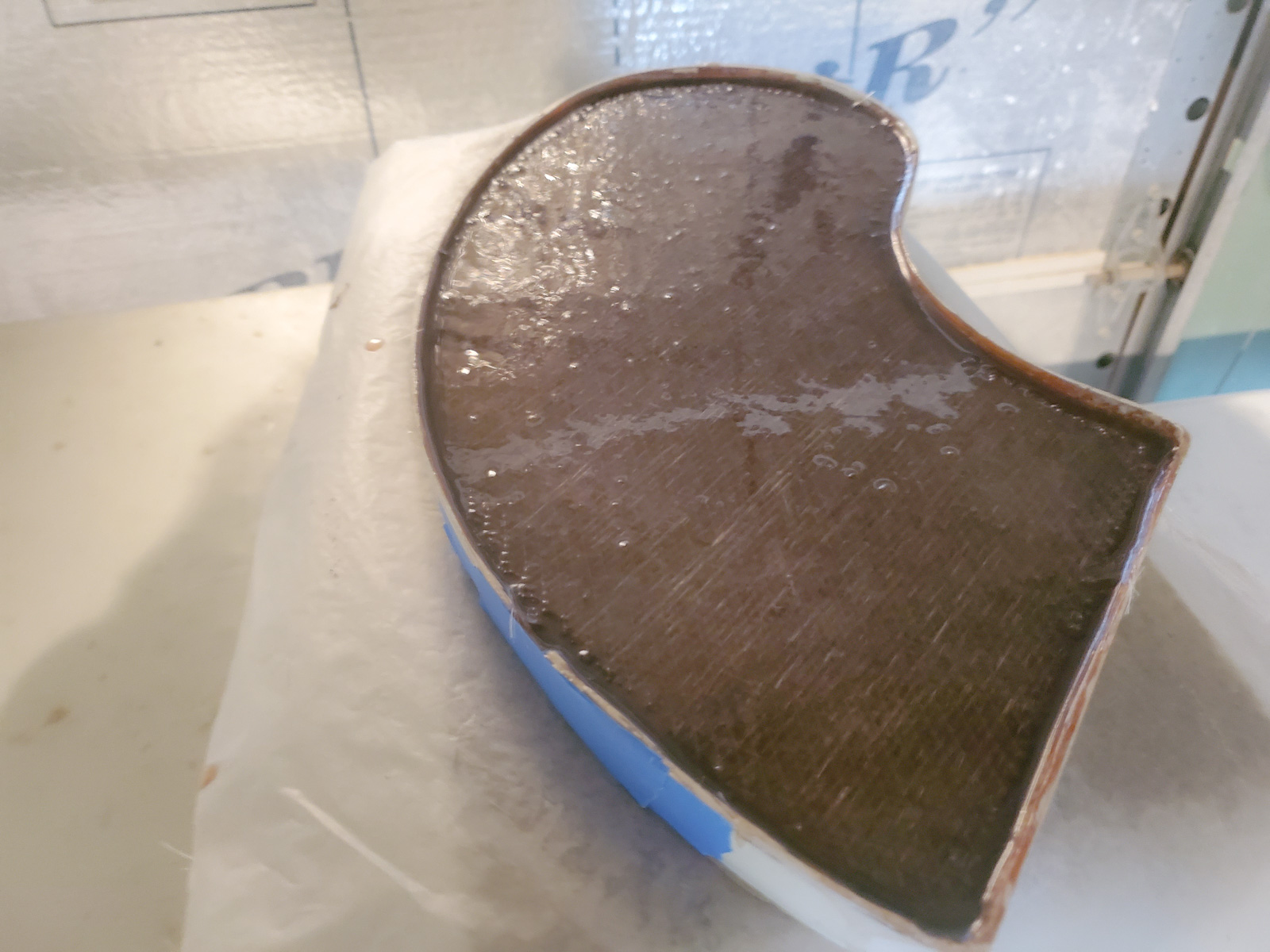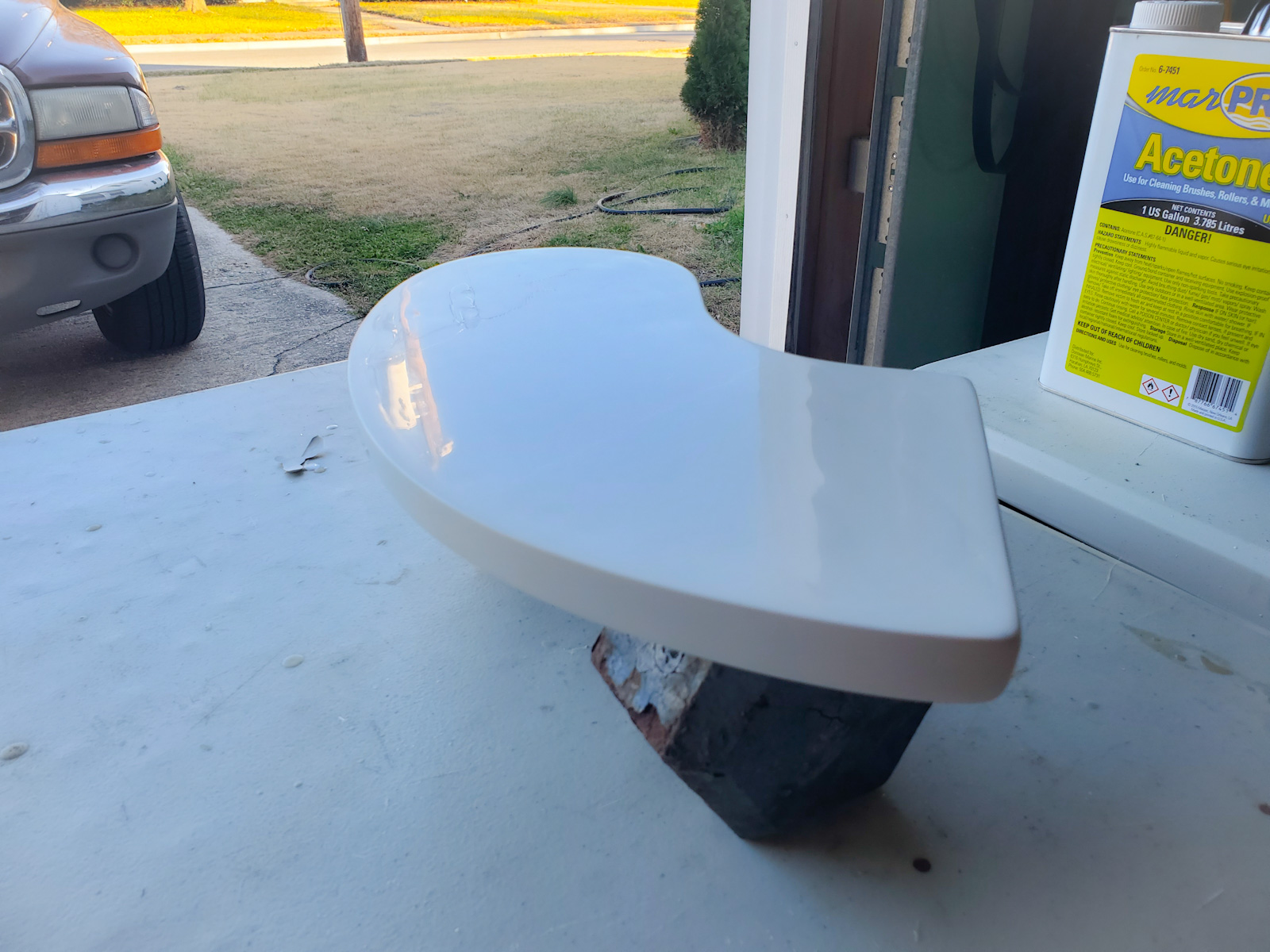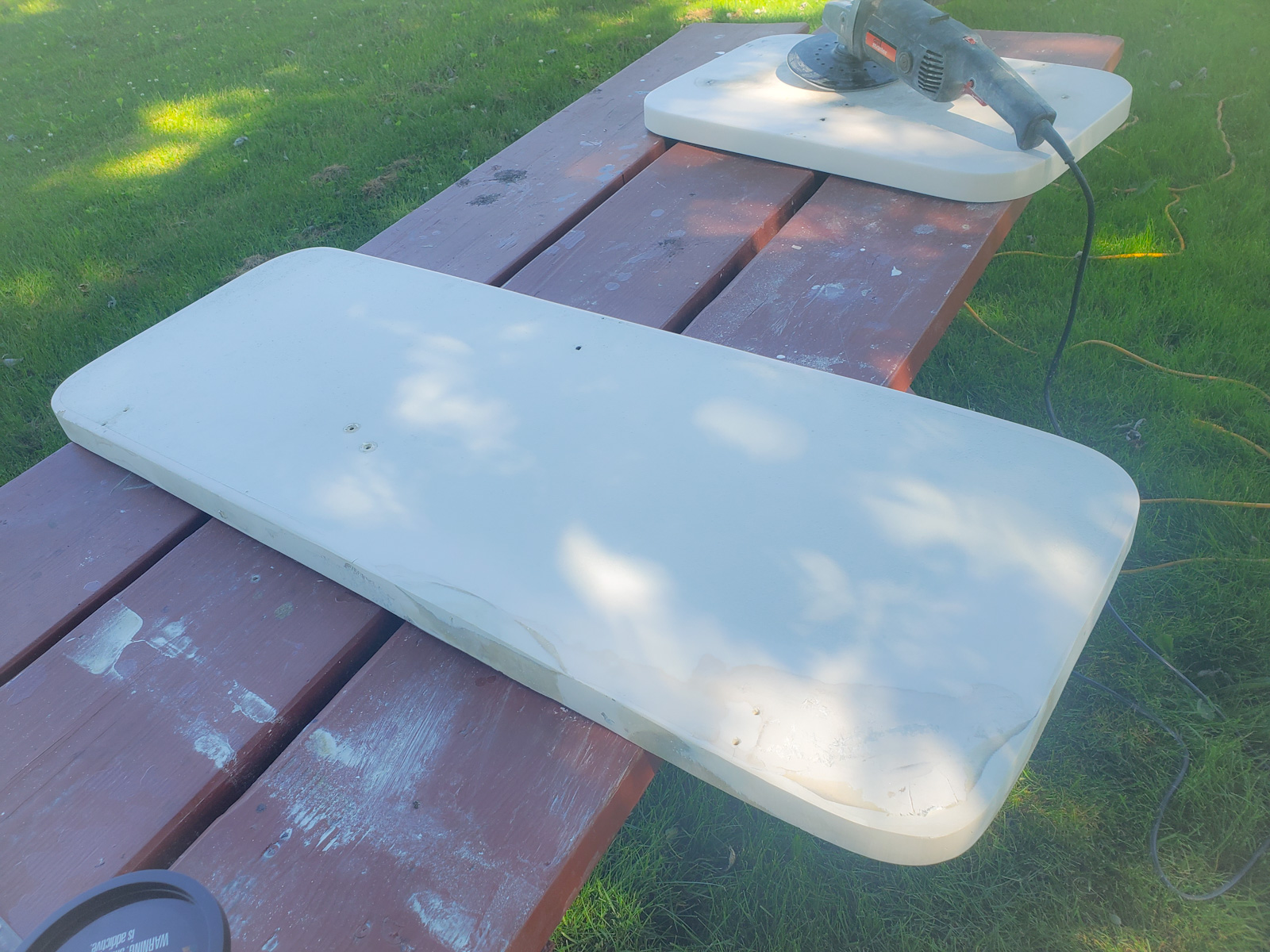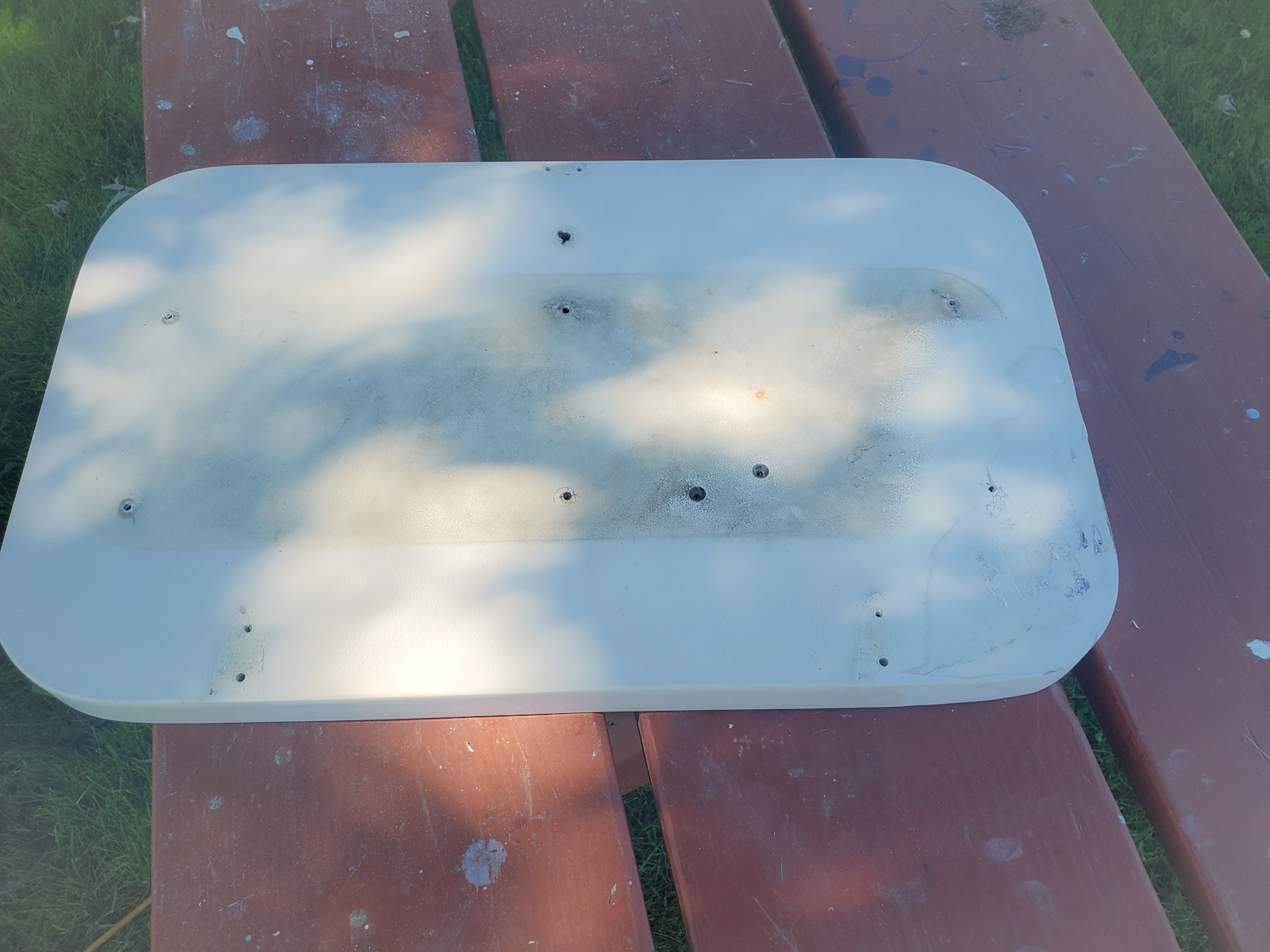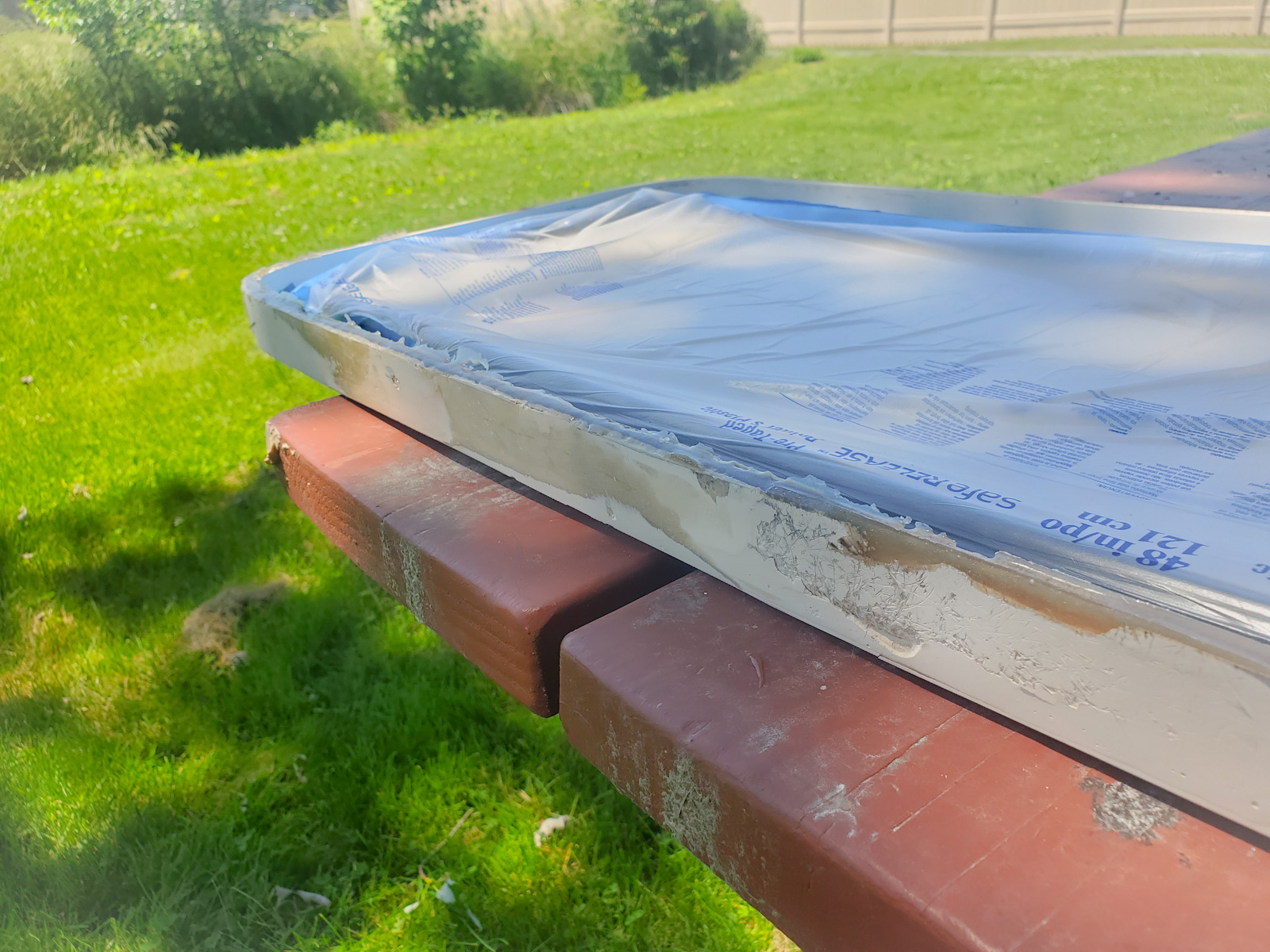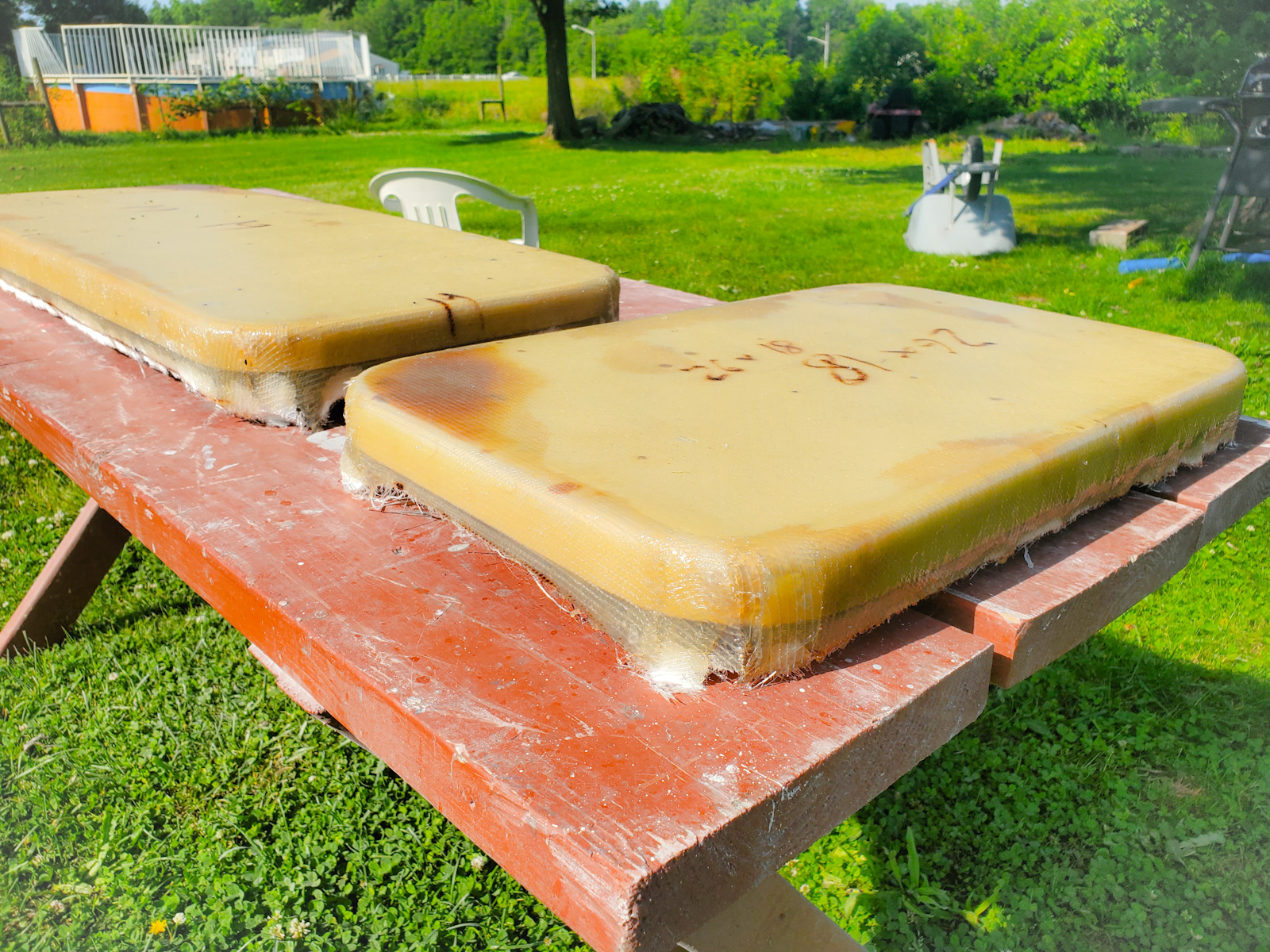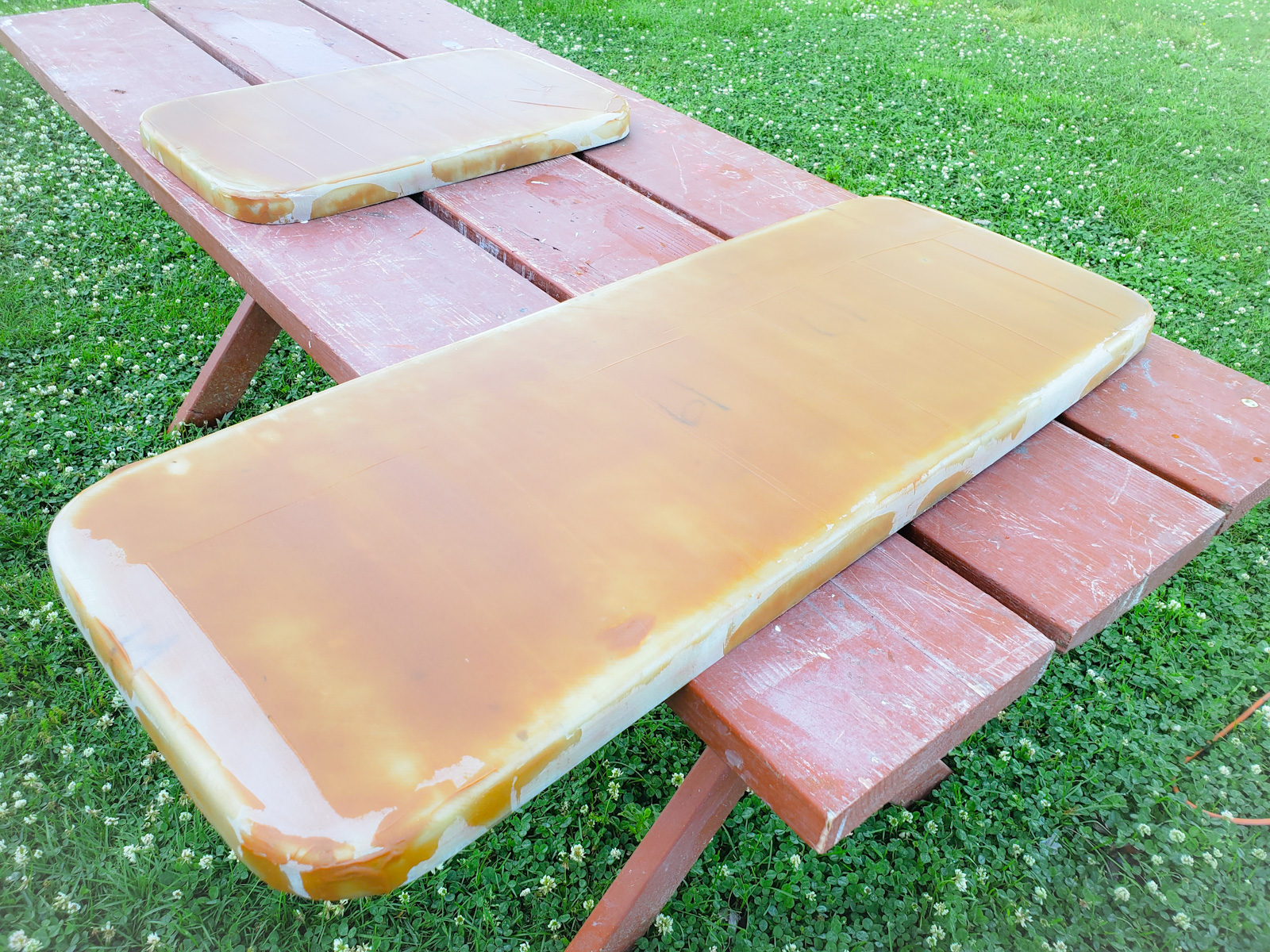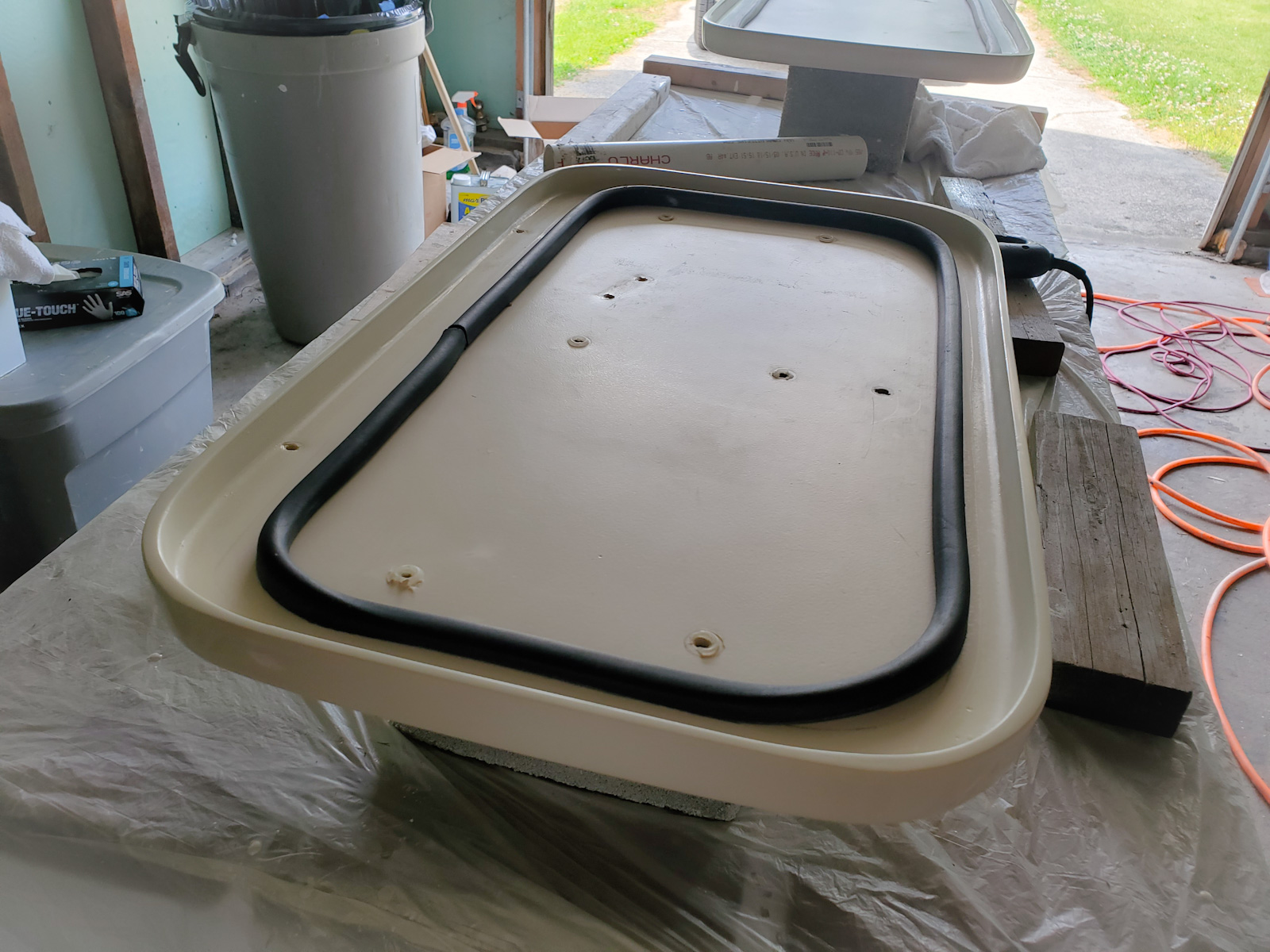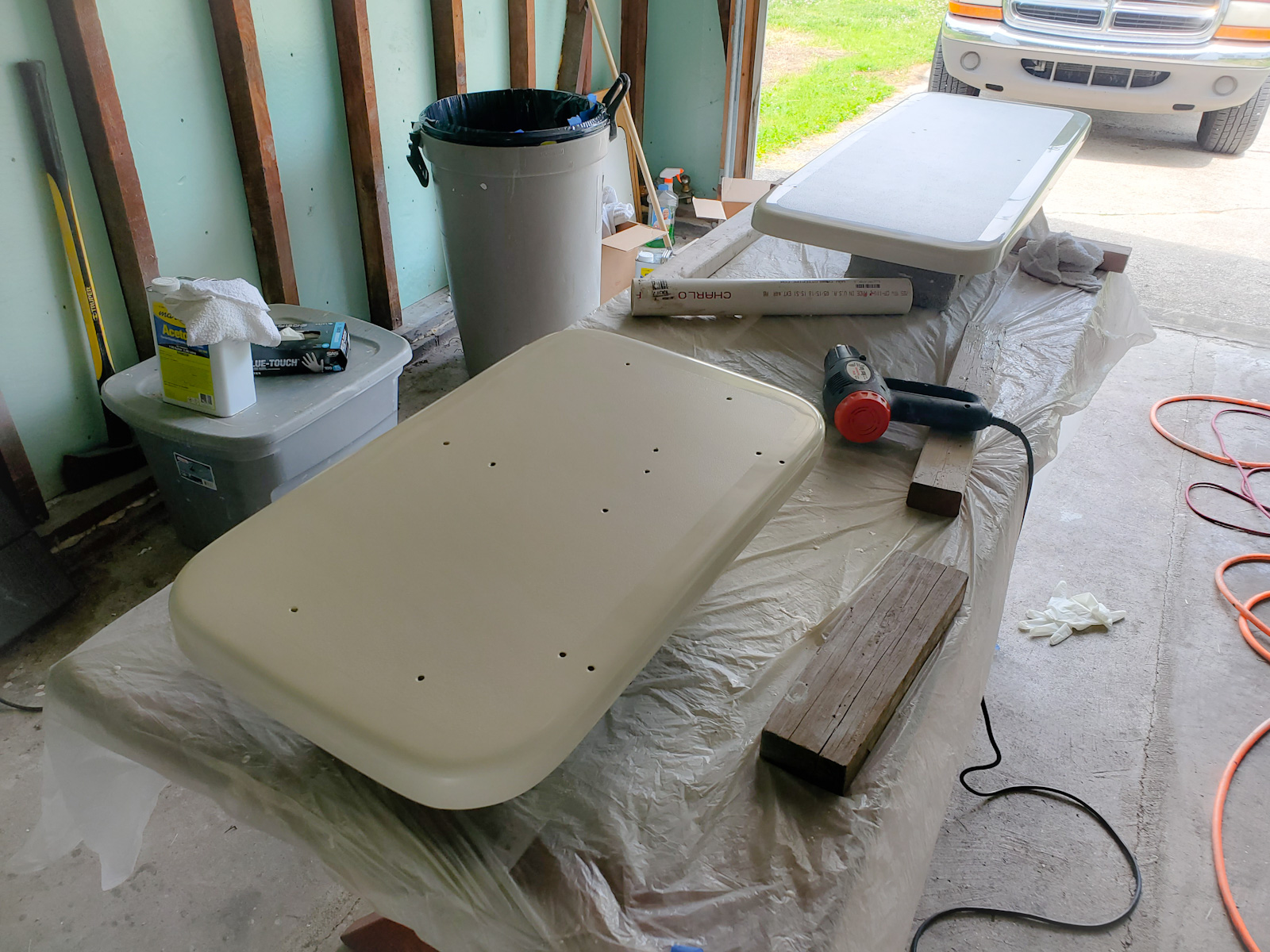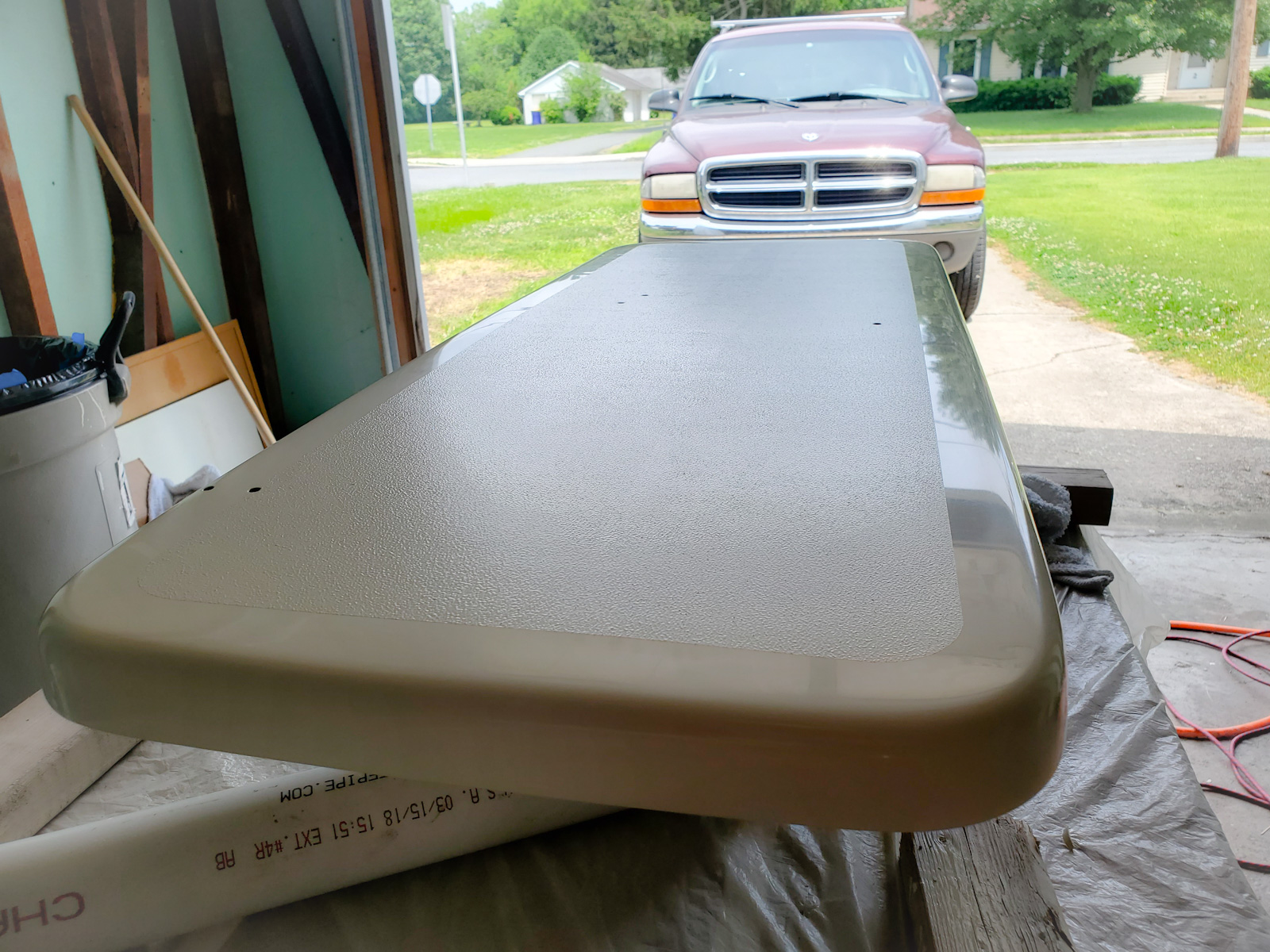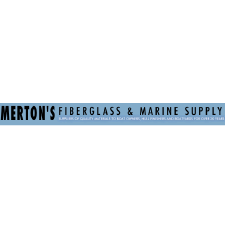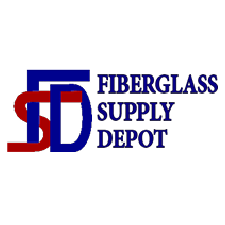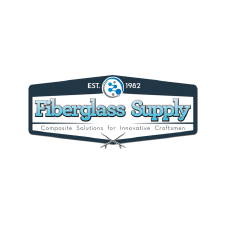Rub Rail Fiberglass Repair
Fiberglass Boat Part Repair
Fiberglass Boat Hatches Rebuild
It’s a Science and an Art!
Resins
Polyester Resin
The overwhelming majority of fiberglass boats are built with polyester resin. It’s lower cost, lower strength, lower viscosity, faster curing, more easily sandable, and less moisture resistant than other resins and IT GETS THE JOB DONE! It bonds well with existing polyester structures, soaks into fiberglass cloth quickly, cures quickly, and sands more easily than its counterparts. Multiple layers of polyester resin products can be applied, cured, and sanded in the same day. The relative lower qualities of polyester resin can be offset with methodology. Lower strength is offset with more thickness. A hull can be built lighter weight with less thickness using a higher quality more expensive resin or it can be built a little thicker and heavier using much lower cost polyester. A more moisture resistant resin can be used or the resin can be coated properly to protect the fiberglass from moisture. A fiberglass structure has to have a protective coating to ensure longevity regardless of the resin used anyway!
Vinyl Ester Resin
This is polyester resin’s big brother. It’s chemically similar. Both polyester and vinyl ester resins are activated with MEKP (methyl ethyl ketone peroxide) and can mix with wax additive to seal off the curing process from the air. Vinyl ester resin is higher cost, higher strength, slower curing, more viscous, more moisture resistant, and more difficult to sand than polyester resin. It is most commonly used below the waterline for increased moisture resistance. Use of vinyl ester resin isn’t necessary. Polyester resin can be used for any repair on a polyester structure if used correctly.
Epoxy Resin
Epoxy is very a different resin than the previous two. It’s much more expensive, stronger, viscous, slower curing, moisture resistant, and difficult to sand than its counterparts. It’s not often used in boat construction because of its high financial costs. In addition to the high purchase price, epoxy takes more labor hours to work with. Its high viscosity makes saturating fiberglass cloth a very SLOW process. It cures slowly; taking a whole day to wait for a single application to cure. It’s difficult to sand; increasing shaping and finishing times. Epoxy resin is used in marine construction in the high-end speed boat market where racers pay a high financial price to shave seconds off of a race time. Speed boats can be built lighter weight using epoxy for a high price.
Epoxy repair and fairing compounds, on the other hand, are practical for use below the waterline. It doesn’t take much longer to use an epoxy fairing compound than a polyester fairing compound. The purchase price is about the same. Epoxy repair and fairing compounds will take a little more time to sand, but the increased moisture resistance is worth it below the waterline.
Some in the boat maintenance industry use epoxy as a protective coating for exterior woodwork. I don’t recommend this. There better options for durable exterior wood coatings ( a.k.a. brightwork) like Bristol or Awlwood. Epoxy can produce a durable table top coating for interior tables. It will, however, deteriorate with exposure to the weather on exterior structures, and be nearly impossible to remove and repair.
Resin Additives I regularly Use
Wax: Paraffin wax dissolved in styrene is added to polyester and vinyl ester resins to seal off curing from the air
MEKP: Methyl ethyl ketone peroxide activates the chemical curing process in polyester and vinyl ester resins
Microfibers: Increase strength and viscosity
Fumed Silica: Increases viscosity
Chopped Strand: Coarse fiberglass adds strength
Wood Flour: Mixed with epoxy for wood repairs
Fiberglass Cloth I Regularly Use
Chopped Strand Mat: Short pieces of fiberglass stuck together in random directions. Used for small repairs. Produces thin, weak lamination. Can bend around corners. Adheres well. Low cost. Often bonded with woven fiberglass to increase adherence.
17 oz Biaxial (a.k.a 1708): The most commonly used, middle of the road, fiberglass cloth used in fiberglass construction and repair. Medium thickness. Can bend around large corners. Easily soaks with resin. Has a chopped strand mat backing to increase adherence.
Woven Roving: Thick strands of fiberglass woven together in a perpendicular direction. Often backed with chopped strand mat for increased adherence. Thick. Strong. Difficult to bend around corners. Used to build up thickness and strength in hulls, transoms, and stringers.
2 oz – 10 oz Cloth: Thin, lightweight fiberglass cloth. Easily bends around corners. Can be strong with multiple layers. Used to laminate in corners and around bends where thicker fiberglass is problematic.
